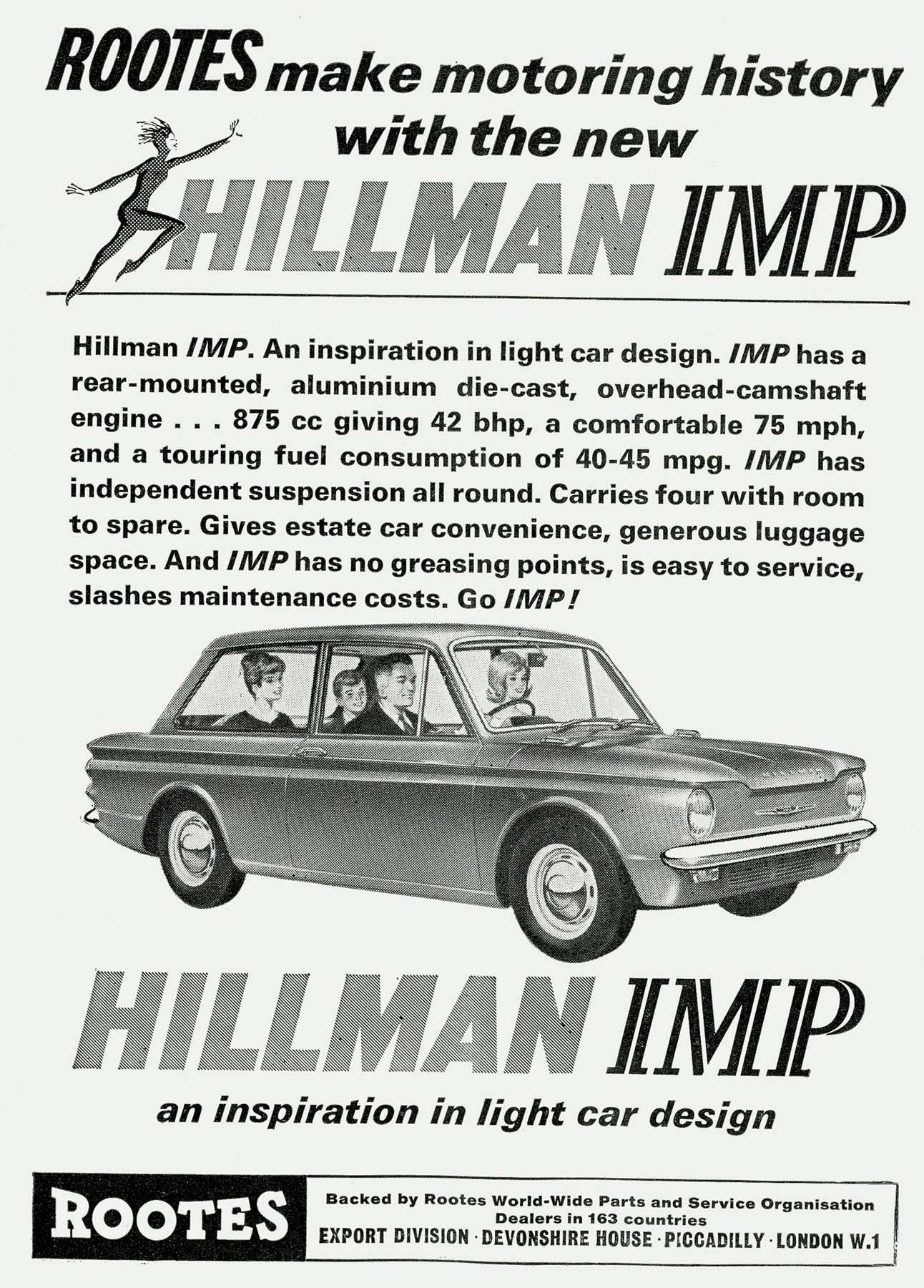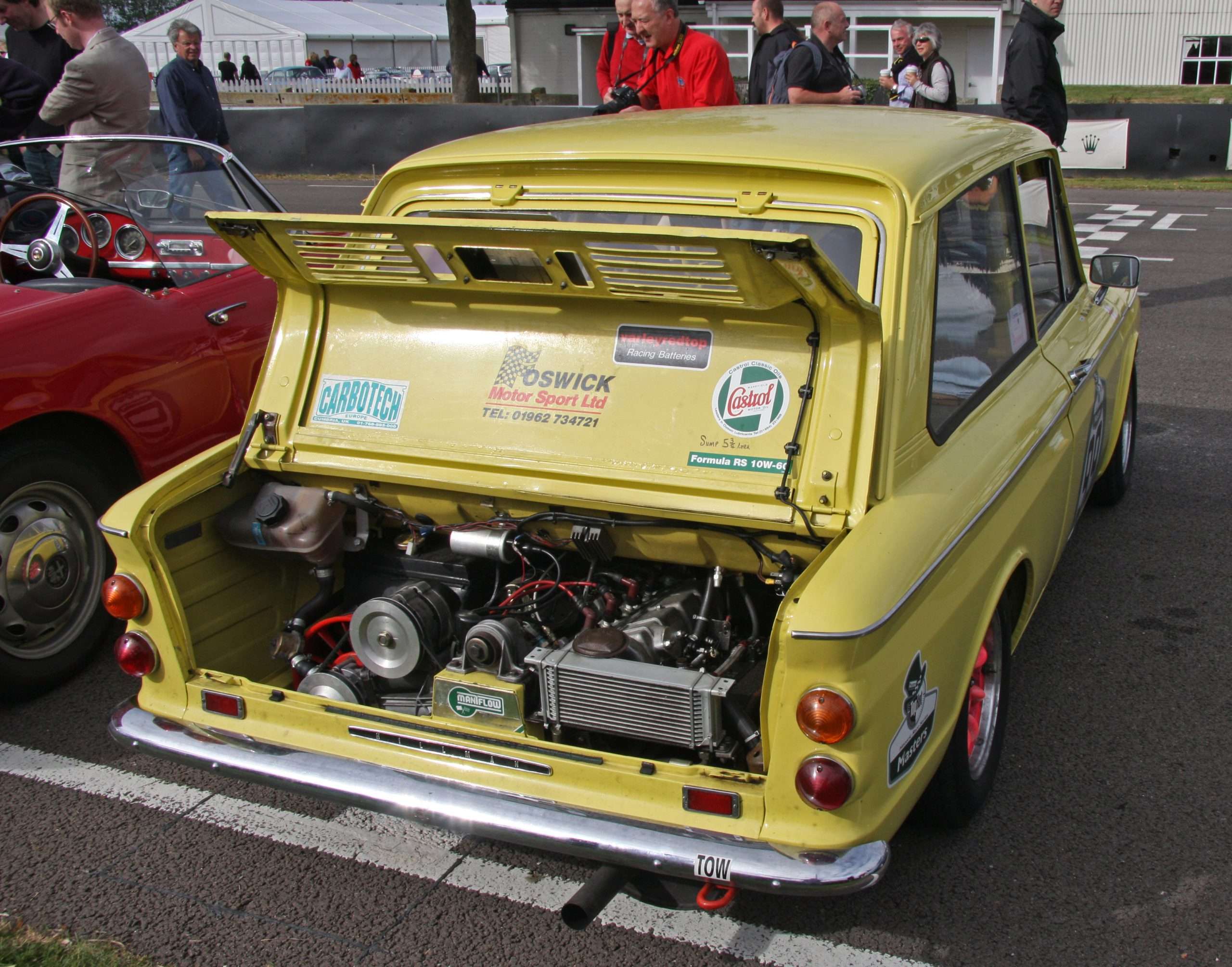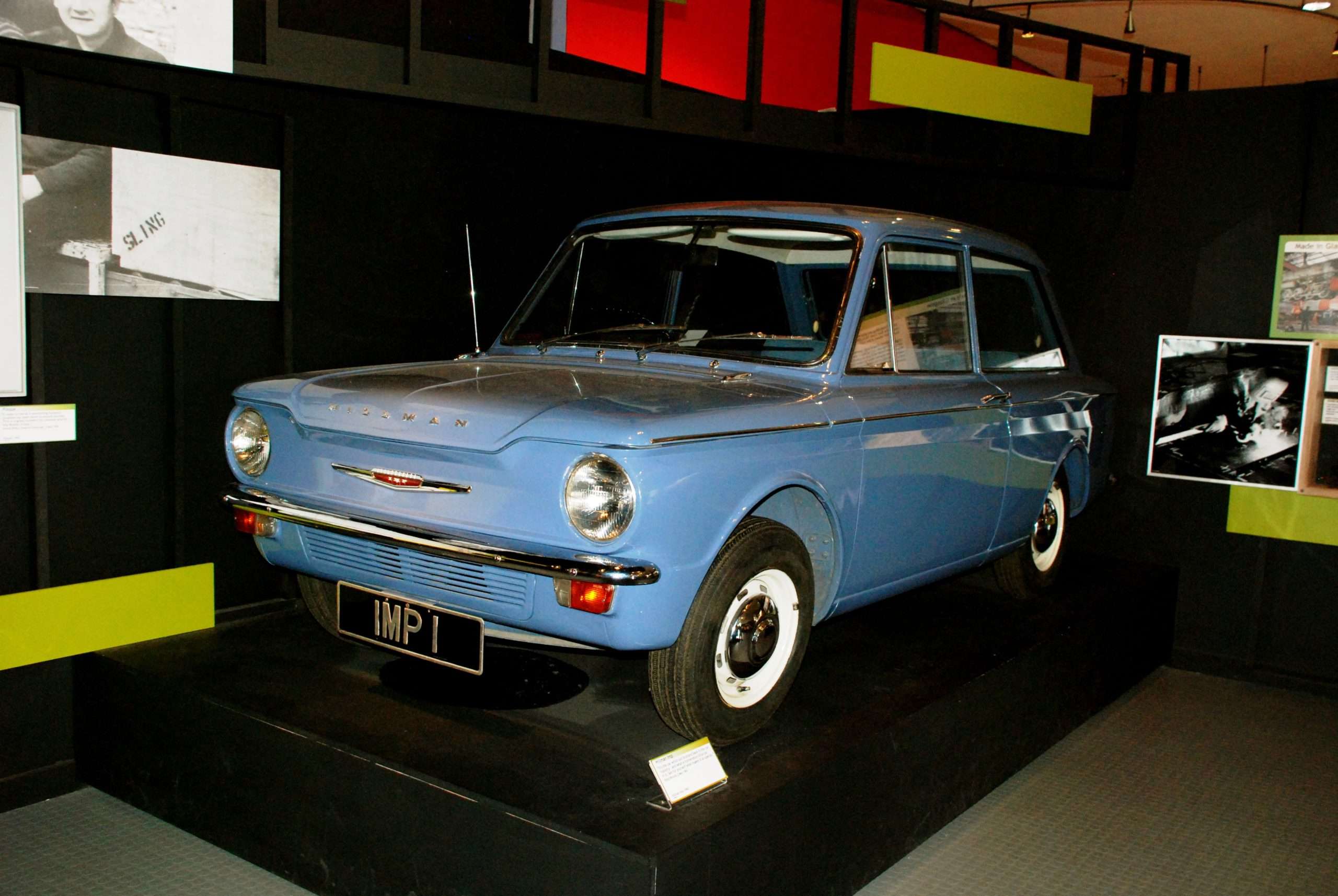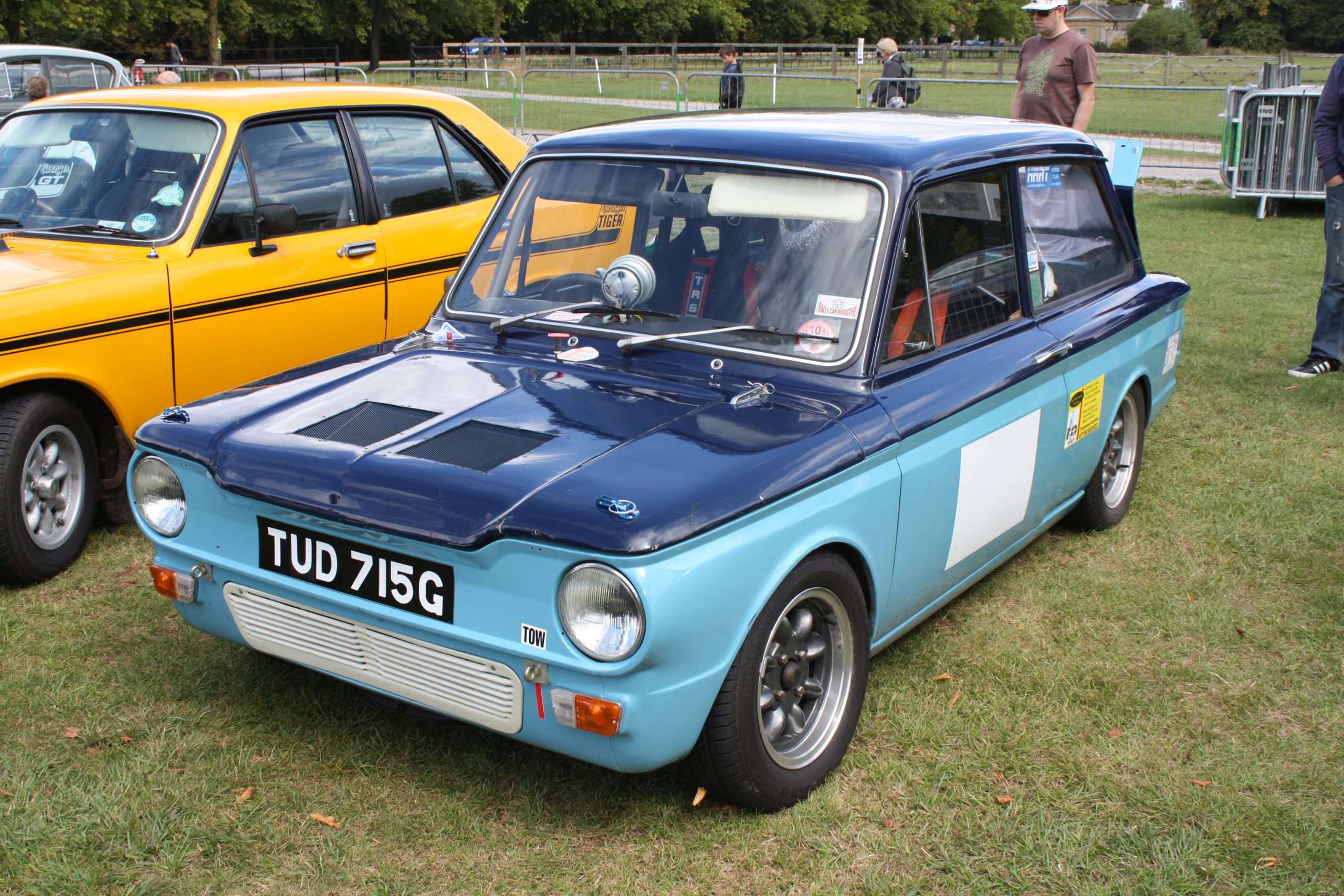Developed in the 1950’s as the Scottish rival to the legendary Austin Mini, the Hillman Imp began production in Linwood just outside Glasgow in the early 1960’s. The innovative car, and modern new factory which employed thousands of Scots, sadly never was the success it was made to be as the project was plagued with poor build quality, unreliability and low sales. The icon of Scottish motoring is still however fondly remembered as Eric Bryan explains.
In 1955 the British Rootes Group inaugurated a small car project with an eye toward designing a vehicle which would compete with the bubble cars of the time. The petrol shortages created by the 1956 Suez Crisis increased the British demand for small, economical cars and further sharpened Rootes’ determination to develop a viable entry into the compact car market.
Engineers Mike Parkes and Tim Fry produced two different prototypes of a model called the Slug, but the Rootes board members condemned the designs for their outward similarities to bubble cars. Instead, the board pointed to the Austin A30 and Ford Poplar as representing a more fitting direction in design for the proposed Rootes car. This decision instigated Project Apex.
Innovative design

The Apex design was fitted with a rear-mounted aluminium 875cc Coventry Climax engine, and a newly-designed Adrian West transaxle. Both were considered excellent and ahead of their time. The Apex body shape, particularly the front end, took some inspiration from American cars such as the Corvair, and the now-familiar Imp lines emerged. Various factors caused Rootes to rush the Apex/Imp project in 1962, preventing the engineers from perfecting some features.
The Hillman Imp went into production at the Rootes factory in Linwood, 14 miles west of Glasgow, and burst onto the British automotive scene in 1963. Published road tests of the Imp praised its splendid gearbox, engine and handling qualities. But due to the hurrying of the project in its final stages, the Imp initially suffered mechanical difficulties and earned a reputation for unreliability. Rootes ironed out these problems, but the Imp’s rear-engine arrangement was overshadowed by the BMC Mini’s front-engine-front-wheel-drive design. However, this new compact saloon became the least expensive British car of the period. Though not reaching the iconic status which the Mini achieved in the mid-1960s, the Imp was an innovative design, and production as well as competition versions of the car had some famous wins in the Tulip Rally and at Monte Carlo.
Some basic specs

The original Imp four-cylinder 875cc engine had a Solex 30 PIHT-2 carburettor, a compression ratio of 10 : 1, and produced 39 hp. The engine was positioned behind the rear axle at a 45-degree angle in order to fit. The aluminium gearbox had synchromesh on all four gears and was considered perhaps the best of its time. The Hillman Imp had a wheelbase of 208cm, a length of 353cm, a kerb weight of 698kg and a turning circle of 9.3m. The car’s top speed was about 122 km/h. Acceleration from 0-100 km/h was approximately 23 seconds, and the average fuel economy was 12.7 km/l. The 1966 Imp Sport variant had 50 hp and offered 0-100 km/h in 18 seconds and a top speed of 138 km/h.
One of the car’s innovative features was an opening rear window-hatch, which gave access to a small luggage area that could be increased by folding down the rear seat. Though not an actual hatchback, the Imp was a predecessor to that design and the first car with this option. The De Luxe version of the Imp, also introduced in 1963, was slightly heavier but had similar performance. Extras available for the De Luxe included radio, whitewall tyres, heavy duty shock absorbers, ventilator (opening wing windows), seat belts and reverse lights. The Imp Series I Saloon was replaced by the Series II in 1965 and the Series III in 1968. Production continued until 1976.
The Imp in competition
In races and rallies from January 1964 to April 1966 Imp competitors achieved over 60 team prizes, class wins and outright wins. Some of these Imps had an 875cc engine; others were powered by a 998cc motor. Competition Imps could be tuned to deliver from 75 to 110 bhp, depending on carburetion. By late 1965, Imps had beaten all but a handful of the highest-performing Minis, and in 1966 every high-profile club race was won in an Imp. Imps achieved outright wins in the 1965 Tulip and Tanzania rallies.
In the 1965 RAC Rally, Imps took 16 first places and made seven lap records. More Imp outright wins were achieved in the 1966 International Saloon Car Race at Silverstone, and the 1966 Nairobi Rally. The 1966 Swiss Tessin Rally saw another outright win accomplished in an Imp.
Imp Monte Carlo Rally results and controversies

In January 1964, Imp team Ernie Hunt and R Mac (competition number 249) won the best performance by a British private owner and best performance from the Glasgow start at the Monte Carlo Rally. In the 1965 rally, Imp team Rosemary Smith and Margaret McKenzie (number 113) finished 22nd overall, fourth in the up to 1000cc GT class and second in the Coupes des Dames. David Pollard and Barry Hughes (number 95) driving an Imp achieved second in the up to 1000cc GT class and 15th overall. Rosemary Smith and Valerie Domleo drove Imp number 107 in the now-notorious 1966 Monte Carlo Rally. Though winning the ladies’ class and placing sixth (in the up to 1000cc unmodified production touring car class), number 107 was disqualified due to a last-minute rule change which declared halogen headlamps illegal. The competition number 35 Imp apparently suffered a similar disqualification in this rally.
Amongst other Imp teams competing in the 1966 rally, Tiny Lewis and Timothy Bosence (number 146) won the up to 1000cc modified production touring cars class, while Philippe Simonetta and Bernard Dirren (number 162) took second in the same category. Patrick Lier and Henri Vuarraz, number 136, took first in the up to 1000cc unmodified production touring cars class. Andrew Cowan and Brian Coyle drove Imp competition number 77 in the 1967 Monte Carlo Rally. In this car, Cowan and Coyle took first place in the production cars up to 1000cc class and 22nd overall, while Patrick Lier and Silvio Vaglio took first in the up to 1300cc GT cars class in an Imp. Peter Harper and Robin Turvey drove another Imp in this rally which, while running second in its class and 46th overall, fell out of the race on the rally’s last night with a carburettor failure. Imp team Smith and Domleo were likewise in this race, but crashed and were out, also on the last night. More Imps gave strong showings in the 1968 Monte Carlo Rally. Cowan and Coyle (number 45) took first in the 851-1150cc production touring cars class and 22nd overall, while Smith and Lowrey (number 169) took second in the Coupe des Dames.
Variants and more
The Imp was the basis of several other designs, such as the Imp Commer Van which appeared in late 1965. There was a boom for small vans in Britain created by a tax loophole, and this Rootes entry was designed to compete in that market. The cargo bed’s interior dimension was high enough to accommodate milk churns, had a 350kg capacity, and was required to be able to climb curbs while fully-laden. Rootes almost landed a Commer Van deal with the Royal Mail, but joy-riding postmen spoiled negotiations – the van was considered too fast! Rootes brought out the Sunbeam Imp Sport in 1966. This model’s 875cc engine, fitted with duel Zenith-Stromberg carburettors, produced 55 bhp and powered the car to a top speed of 145 km/h. The Hillman Imp Californian was a fastback coupé version of the car, which went on the market in early 1967. Also in 1967, Rootes introduced an estate version of the Imp, the Hillman Husky, often referred to as the Imp Estate. The Sunbeam Stiletto, which married the coupé design with the Imp Sport power-plant, began production in October 1967.
There were quite a number of other Imp variants, and many vehicles of other marques which used the Imp motor. These included the Probe 15, the TVR Tina, the Bond 875 Mks I and II, and various striking Costin-Nathan and Nathan creations. There were also the Blimp, the KVW Imposter and the Zagato Zimp. The famed Coventry Climax engine was further used in speedboats, hydroplanes (including in a world record holder), motorcycles, street-sweepers, and even in a go-kart and a hovercraft!
Text by: Eric Bryan
Main photo: A competition Hillman Imp Super at the 2011 Blenheim Palace Classic Car Show. Simon Q, CC by 2.0.

